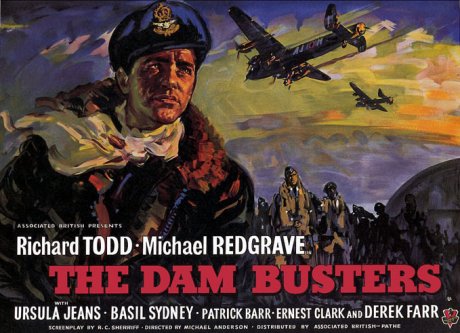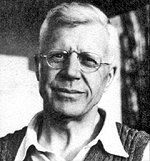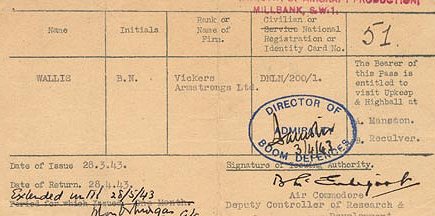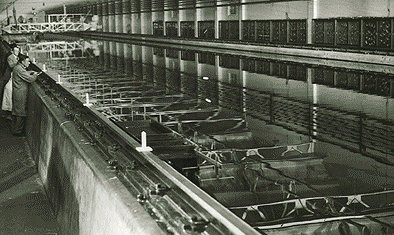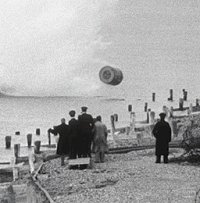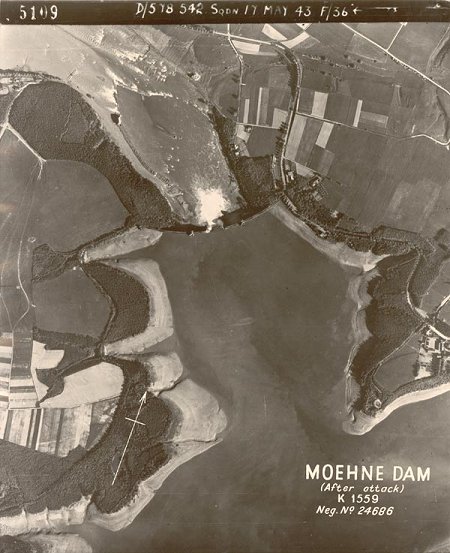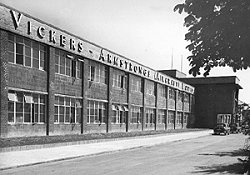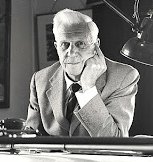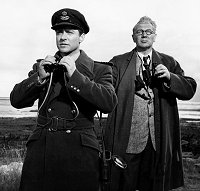|
||||||||||||
The Dambusters
Swindon's connection to the genius of Barnes Wallis & the Bouncing Bomb
Below is our tribute to the incredible bravery of 617 Squadron & the genius of Barnes Wallis, who invented the famous bouncing for the iconic raid on the German dams on the night of 16 & 17 May 1943.
The Dambusters
Swindon's connection to the genius of Barnes Wallis & the Bouncing Bomb
First written on 13 May 2013 to celebrate Dambusters 70
It's a raid now ingrained into British history for its shear ingenuity & incredible bravery, not least for the sacrifice made by the 53 airmen who ultimately lost their lives ensuring Operation Chastise, as it was officially known, wasn't one audacious wasted effort.
But it is also best remembered for the unique nature of the invention that made it all possible in the first place - the 'bouncing bomb' designed by Vickers engineer Barnes Wallis.
To mark this year's Dambusters' commemoration, we pay tribute to Barnes Wallis and describe how Swindon played just a small part in his life and work and where now the legacy of his genius and best-known creation is preserved.
Barnes Wallis Archive
Science Musuem, Swindon
One thing Swindon is good at is storage!
The Bodleian Library in Oxford has a purpose-built unit here where they keep all their thousands of rare books and manuscripts, and the Science Museum in London also has a specially air-conditioned site at Wroughton for the preservation of its most important archives.
It is there that over a hundred boxes of papers of Barnes Wallis's 50-year engineering career are kept.
The papers comprise design notes, photographs, calculations and correspondence of Wallis's work on airships, swing-wing & hypersonic aircraft, deep penetration bombs and various outside contracts.
But crucially, it contains a fascinating insight and record of Wallis's incredible work and thought process as he developed the bouncing bomb during the war years and in the lead up to May 1943.
Bathtub experiments
Wallis had first experimented with skipping marbles over water tanks in his garden - and bathtub! - as late as 1942, which led him to describing the principle and theory of a 'bouncing bomb' in an official paper in the April that year.
He called his initial idea a
'Spherical Bomb — Surface Torpedo', in which an explosive device could be made to skip over the surface of water (therefore avoiding torpedo nets) before hitting its target and sinking underwater and exploding at depth.
With the added concentration of force caused by the surrounding water, the explosion and resulting shockwave would be intensified - a crucial element Wallis released if the thick, many thought impenetrable, walls of a fortified dam were to be breached.
The time delay of the device trailing behind the aircraft dropping it also meant a reduced the risk of the explosion causing damage to the aircraft itself.
War Office Go Ahead
Wallis was given the go ahead to develop a bomb on these principles - then codenamed 'UPKEEP' - in November 1942 for an attack on the Ruhr dams. But he was only given a maximum of seven months to complete the task, as its maximum effectiveness had to coincide with the dams being at full capacity after seasonal rainfull in May of 1943.
Initial tests, however, proved disasterous with the outer casing of the first bouncing bombs shattering on impact as they hit the water and the lowering of the height required to fly at for a successful release brought down to as low as 60ft (18m). The speed of the aircraft also had to increased to a minimum of 232mph.
617 Squadron
While this late bomb development was taking place, a specially selected group of Lancaster bomber pilots and crew (the Lancaster was the only aircraft that could take the weight of UPKEEP) under the leadership of 24-year-old Winger Commander Guy Gibson VC DSO DFC (centre) had been selected.
Top secret flight training at low level and high speed were already under way when the extra speed and reduced height over the target was asked for by Wallis.
But after a frantic re-design and a final test in front of RAF heirachy just 3 days before the 16th May, Operation Chastise using 'UPKEEP' was given the final go ahead.
19 Lancasters of 617 Squadron took off from RAF Scampton on the evening of 16 May and after suffering losses on the way to the target, successfully dropped a succession of bouncing bombs on the Mohne and Eder dams, both of which were breached.
The ensuing flooding caused significant damage to German war factories and heavily disrupted hydro-electric power.
Eight Lancasters were shot down in the raid, with 617 suffering 53 casualties of the 133 aircrew taking part. 3 were taken prisoner of war.
Guy Gibson returned to Scampton at 4.15am on the morning of the 17th to be told his beloved dog 'N*gger' had been killed that night after being run over by a car.
Working at Vickers Swindon
As senior engineer in the 1950s and 60s
Barnes Wallis only really worked for one company during his career - Vickers Armstrong.
That included conducting his usual job during the war years as their Assistant Chief Designer at Vickers in Windsor while he and his team developed the bouncing bomb.
Wallis worked closely with all these departments as a regular visitor to Swindon during the 50s & 60s as the Head of the Vickers-Armstrong Research & Development Department to oversee and play a key role in projects such as swing-wing development, aerospace research and the early design work on Concorde.
A South Marston-built Swift (WK198) set the world speed record at 736mph, over Libya, on September 25th, 1953 - a record it held for just eight days.
Consequently he became a pioneer in the remote control of aircraft, the likes of which have been developed for use today in military and - soon to be - commercial applications.
He kept working well into his eighties at Vickers until he retired in 1971. He died in 1979 aged 92. Barnes Wallis was Knighted for his efforts in 1968.
Lancasters Broken Up
RAF Wroughton
In a rather sad connection to Swindon, the eleven surviving workhorses of Operation Chastice - the Lancasters Bombers themselves - largely ended up at RAF Wroughton to be scrapped.
After the raid, Bomber Command sent 617 Squadron on another one hundred missions during the last two years of the war, with many of the Dambusters heroes never seeing VE Day.
But at the end of the conflict there was no longer a need for a large air force of wartime proportions, and as a result Wroughton received demobilised Avro Lancaster bombers, most of which ended up as scrap metal.
Richard Todd in Swindon
Star of the Dambusters film
Probably the most famous face of the Dambusters is someone who never took actually part in the mission - but played one of its heroes in the film.
For many it was the first time anyone was truly aware of the story of the raid and and struggle and sacrifice behind it.
All we know is, Richard Todd once opened the Highworth Fete at Southfields Primary School in 1978 or 1977, we aren't actually sure. But a bumper crowd definitely turned out to see him, such was the draw of Todd's stardom and association with one of the bravest human efforts in living memory.
On Thursday & Friday this week we should all pause to remember it once again.
The Science Museum Archive, Swindon
By appointment only
The archives including the Barnes Wallis papers kept at the Science Museum in Wroughton are only available to see by appointment only.
See the link below for more information. |
||||||||||||
|
||||||||
|
||||||||
|
||||||||
|
||||||||
|
||||||||
|
||||||||
|
||||||||
|
||||||||
|
||||||||
| Barnes Wallis - wikipedia | ||||||||
| Operation Chastise - wikipedia | ||||||||
| Science Museum Archive, Swindon - more info. | ||||||||






